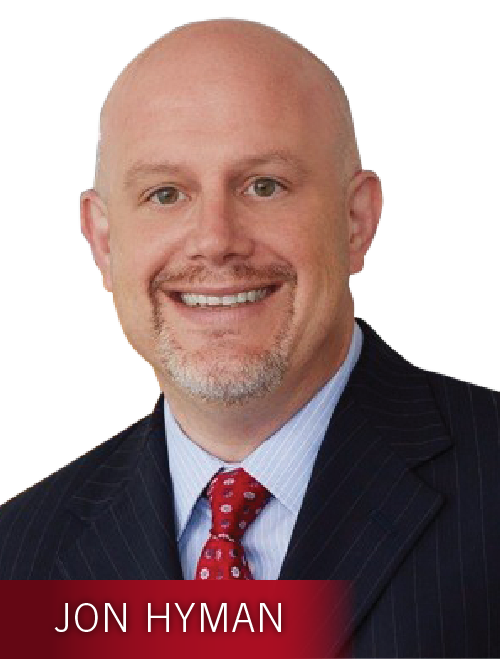While the #MeToo movement has brought some high-profile results including the imprisonment of Harvey Weinstein and Bill Cosby, the reality is that in general there have been few consequences for harassers.
This is especially true for populations of employees especially vulnerable to sexual harassment, including low-wage workers in the retail and service industries. Looking at data from 1995 to 2016, the Equal Employment Opportunity Commission received more complaints of sexual harassment from the restaurant industry than from any other industry, according to Time. Retail employees, meanwhile, occupy the No. 2 spot in number of sexual harassment complaints filed.
 According to digital media company Racked, what makes service workers vulnerable to sexual harassment includes low wages and complicated, ineffective complaint processes that rarely lead to any consequences. Further, harassers know they can prey on vulnerable workers who are often women or people of color because they can use these vulnerabilities against the person they’re harassing and take advantage of a power imbalance, according to Racked.
According to digital media company Racked, what makes service workers vulnerable to sexual harassment includes low wages and complicated, ineffective complaint processes that rarely lead to any consequences. Further, harassers know they can prey on vulnerable workers who are often women or people of color because they can use these vulnerabilities against the person they’re harassing and take advantage of a power imbalance, according to Racked.
As rampant as sexual harassment is, offenders often get away with it and victims don’t believe their complaint will go anywhere. Meanwhile, HR may get the reputation of being more interested in protecting the company than protecting the victim.
Fifteen percent of employees have been sexually harassed according to “The State of Humanity at Work,” a spring 2020 report from software company Workhuman, which surveyed 2,613 full-time employees. But that number is probably higher given the sensitivity of the topic, the report noted. Of these people, 39 percent said they don’t trust their HR department. Only 47 percent of women and 66 percent of men who have been sexually harassed reported it.
“This mistrust is further manifested in low numbers of people reporting harassment. Changing these numbers is going to take work building up trust and showing commitment to listening and respect,” according to the report.
What employees can do after being sexually harassed
File a formal complaint: Despite employee concerns that HR will do nothing, filing a formal complaint is still a good idea.
If your company has a specific procedure for handling sexual harassment complaints, employees should follow it to the letter, taking note of every detail, like any time limits set out in that policy, advises law firm Allred, Maroko & Goldberg. In the case where a company has no formal procedure, an employee can start by reporting the harassment to their immediate supervisor, and, in the case where the supervisor is the one doing the harassing, report it to that supervisor’s manager. “It is important, particularly in hostile environment cases, to make sure that your company’s management knows of the harassment,” the law firm’s blog noted.
Keep records of everything: If an employee has any uncomfortable incident with their harasser, they can keep a log of times, dates and exactly what the person said or did for reference. They can also note witnesses who may be able to corroborate the incident. When they have digital evidence like texts, emails or instant messages to screenshot, that is further evidence to bring to HR with their complaint.
Being thorough and detailed is important here. The more details and evidence someone has, the better.
Further steps an employee can take: Sometimes a harassment victim is unable to resolve your harassment complaint by using your employer’s internal procedures, the law firm blog noted. If they still want to pursue the complaint, they can turn to the Equal Employment Opportunity Commission or their state’s human rights or civil rights enforcement agency next.
This can lead to several outcomes. The agency may decide not to proceed with the complaint but issue the victim a “right to sue” notice, allowing them to bring the case to court. The agency may also choose to file their own lawsuit against the employer.
A lawsuit is not the route an employer wants to take. That’s one reason it’s important to HR to step up and take sexual harassment cases more seriously.
“HR is like the CIA — when we do the right thing (like getting rid of a harasser) employees might never know about it, but when we screw up (like protecting a harasser), everyone knows,” said Kate Bischoff, an employment attorney at tHRive Law & Consulting LLC. This only magnifies the reputation of HR as a department that ignores critical culture issues like sexual harassment.
If this is the reputation of HR — and at times it is the reputation HR departments have earned, Bischoff said — then HR professionals must work harder to build trust with employees. They can get to know employees, ask them how they’re doing and find out what HR can do to help with any issues they’re having.
Building these relationships may help people feel like HR is trustworthy and will take sexual harassment seriously.
HR’s role in building employee trust
“The best way to build a connection with employees is to create a human-centered culture. Leaders can do this by keeping the line of communication open and providing frequent check-ins,” Bischoff said. “[And] good HR professionals build trust and take action to prevent and stop harassment.”
The report stressed the importance of a “human workplace,” defined as an environment where people are allowed to be human, make mistakes and treat each other with empathy, Bischoff said. “If we see each other as humans, we’re more likely to speak up when things are not right, when there are problems, and when we believe we’ve been harassed,” she added.
Not addressing sexual harassment has a clear negative impact on employees, but it can also adversely affect employers through turnover. Of the 21 percent of employees who are actively looking for a new job, 33 percent have been sexually harassed at work, according to the survey. This number is probably higher, the survey stated.
The “lawyerly” reason organizations should take sexual harassment more seriously is because of the risks they face due to bad press, lawsuits, charges of discrimination and the costs of settlement. But there’s much more to consider than reputational and financial damage. “Good organizations hear the lawyerly response more clearly, but great organizations hear the human response more clearly,” Bischoff said.
When sexual harassment occurs, a company is not providing an environment for employees in which they can do their best work and voice their concerns, she said. The company is treating their employees poorly, and it’s not providing the best services or products to its clients and customers as well.
The Workhuman report found that of the women who reported being sexually harassed, 29 percent did not get their claim investigated, Of the men reporting sexual harassment, 12 percent did not get their claim investigated.
This may also contribute to mistrust in HR, Bischoff said. “There’s no good reason for harassment not to be investigated,” Bischoff said. “Serious allegations of harassment should always be investigated.”





 According to digital media company Racked,
According to digital media company Racked, 







